Revision Shoulder Arthroplasty (Replacement Surgery for Artificial Shoulder Joints)
~For those experiencing issues after shoulder arthroplasty~
・Do you have pain in your shoulder that has a prosthetic joint?
・Most people who undergo shoulder replacement surgery have had conditions such as osteoarthritis of the shoulder or proximal humeral fractures.
・Even if your recovery after surgery was initially good, have you noticed increasing shoulder pain or reduced range of motion over time?
~Why do problems occur after shoulder arthroplasty? ~
・Metal fatigue, similar to dental implants
・Loosening of the implant (loss of fixation stability)
・Infection in the shoulder joint (septic arthritis)
The above reasons are considered to be the main causes.
Management of Patients with Metal Fatigue or Implant Loosening
・Implant replacement may be necessary. This procedure is called revision shoulder arthroplasty.
What kind of surgery is it?
・The implant is first removed.
・A new implant is then inserted.
How is the implant removed?
・Implants are often difficult to remove easily.
・In many cases, making a small split in the humerus with a chisel allows the procedure to proceed more smoothly.
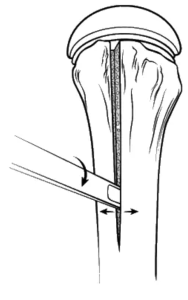
Here is a case of a patient who underwent revision shoulder arthroplasty:
75-year-old female, right shoulder
Previously underwent shoulder arthroplasty for osteoarthritis of the shoulder
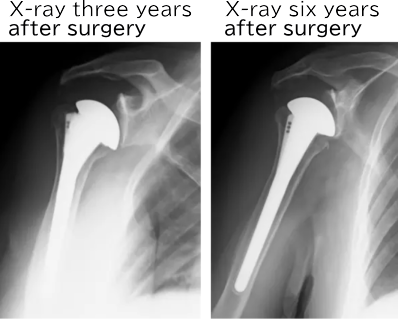
On closer examination of the CT scan, the glenoid shows significant wear.
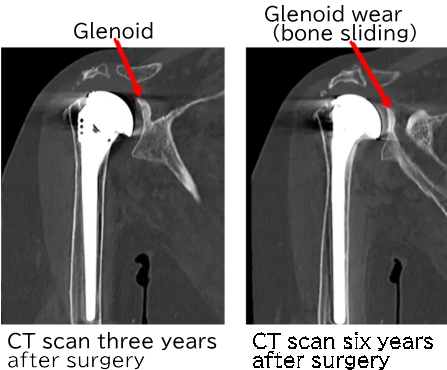
Range of motion before surgery:
The right shoulder was painful, and adequate movement was not possible.

Why is it necessary to make a split (or cut) in the humerus?
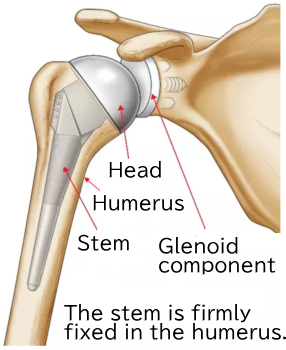
When the humerus is split with a chisel, the stem tends to become loose.

After all implants are removed, a reverse shoulder arthroplasty is performed.
Implant for reverse shoulder arthroplasty
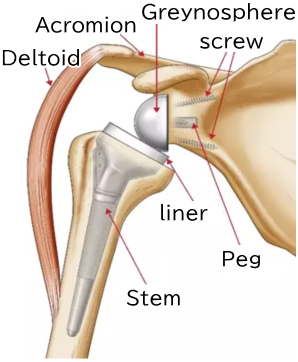
If the split in the humerus is left as is, there is a risk of postoperative implant loosening.
Therefore, we use an allogeneic tibial bone graft.
In this patient, an allograft from the tibia was used.
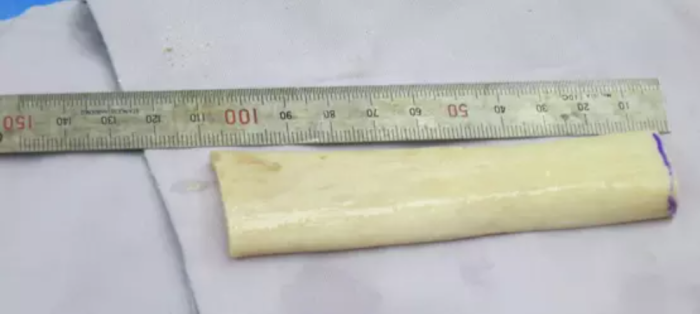
By fixing the allograft to the humerus with wires, we ensure that the bone split closes properly.
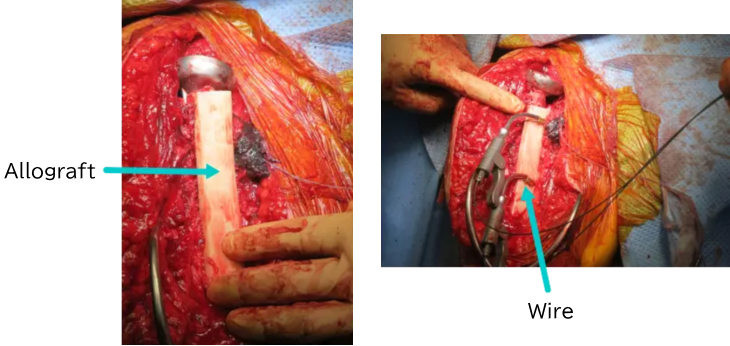
Immediate postoperative image
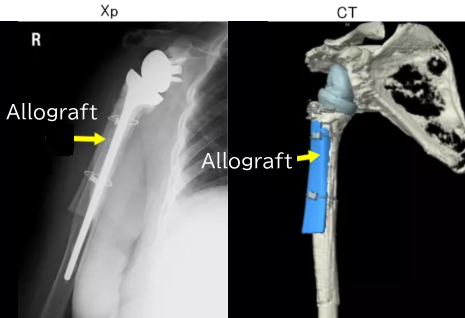
3 years after surgery
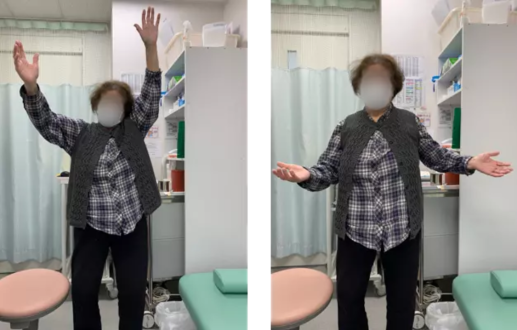
6 months after surgery
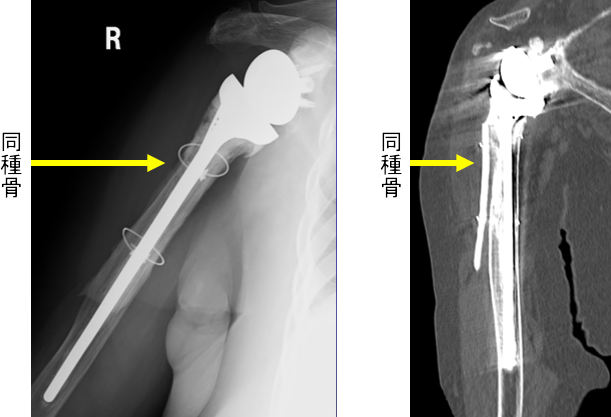
Range of motion at 1 year post-surgery
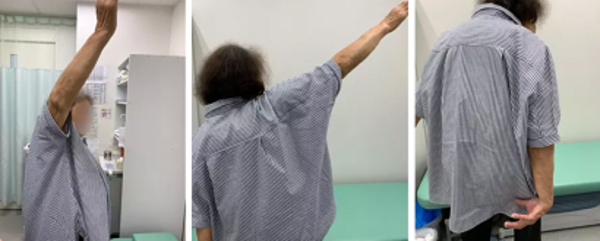
1 year after surgery
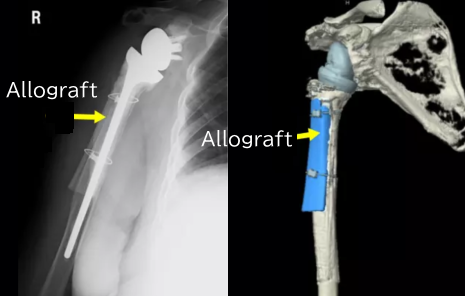
3 years after surgery
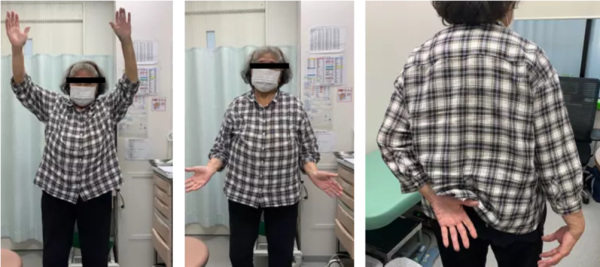
3 years after surgery
The allograft remains fixed to the humerus even after 3 years, and the stem is firmly secured within the humerus.
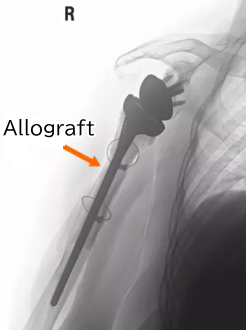
Symptoms 3 years after surgery
・There is no shoulder pain.
・It is difficult to move the hand behind the back.
・Life is much easier compared to before the surgery.
This is a different patient.
This patient did not receive an allograft.
If the bone split is small, the humeral split can close adequately without using an allograft.
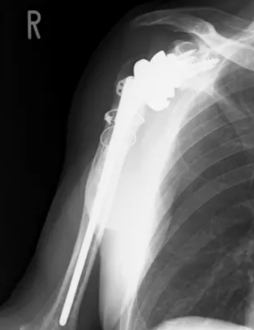
Summary
・Symptoms may reoccur some time after shoulder arthroplasty. In such cases, revision shoulder arthroplasty may be necessary.
・Reverse shoulder arthroplasty is effective as a revision procedure. However, the degree of improvement varies depending on the individual’s condition.
・Because this surgery requires specialized training even among shoulder specialists, it is recommended to consult carefully with a local shoulder specialist about the surgical indications and the benefits and risks of the procedure.
Artificial Joints

In cases of degenerative shoulder arthritis where conservative treatments do not alleviate symptoms and the patient seeks pain relief and improved mobility, joint replacement surgery is recommended.
- What is Total Shoulder Arthroplasty?
- Anatomical Total Shoulder Arthroplasty (Total Shoulder Replacement Surgery)
- Rotator Cuff Tear-related Degenerative Shoulder Arthritis
- Joint Replacement Surgery for Patients with Rheumatoid Arthritis
- Revision Shoulder Arthroplasty (Replacement Surgery for Artificial Shoulder Joints)
- Postoperative Outcomes of Total Shoulder Arthroplasty in Elderly Patients
- Is Returning to Sports Possible After Reverse Shoulder Arthroplasty?
